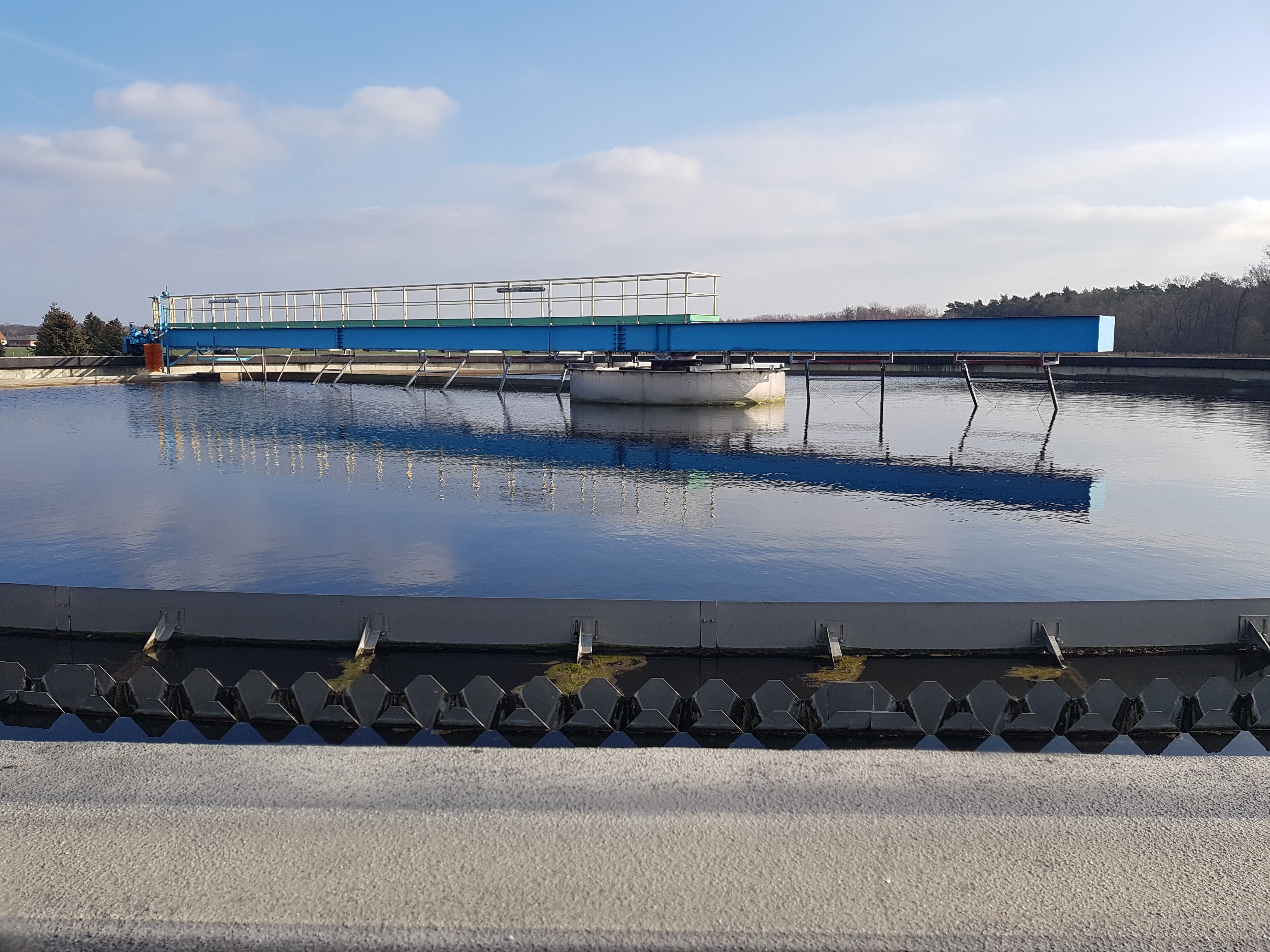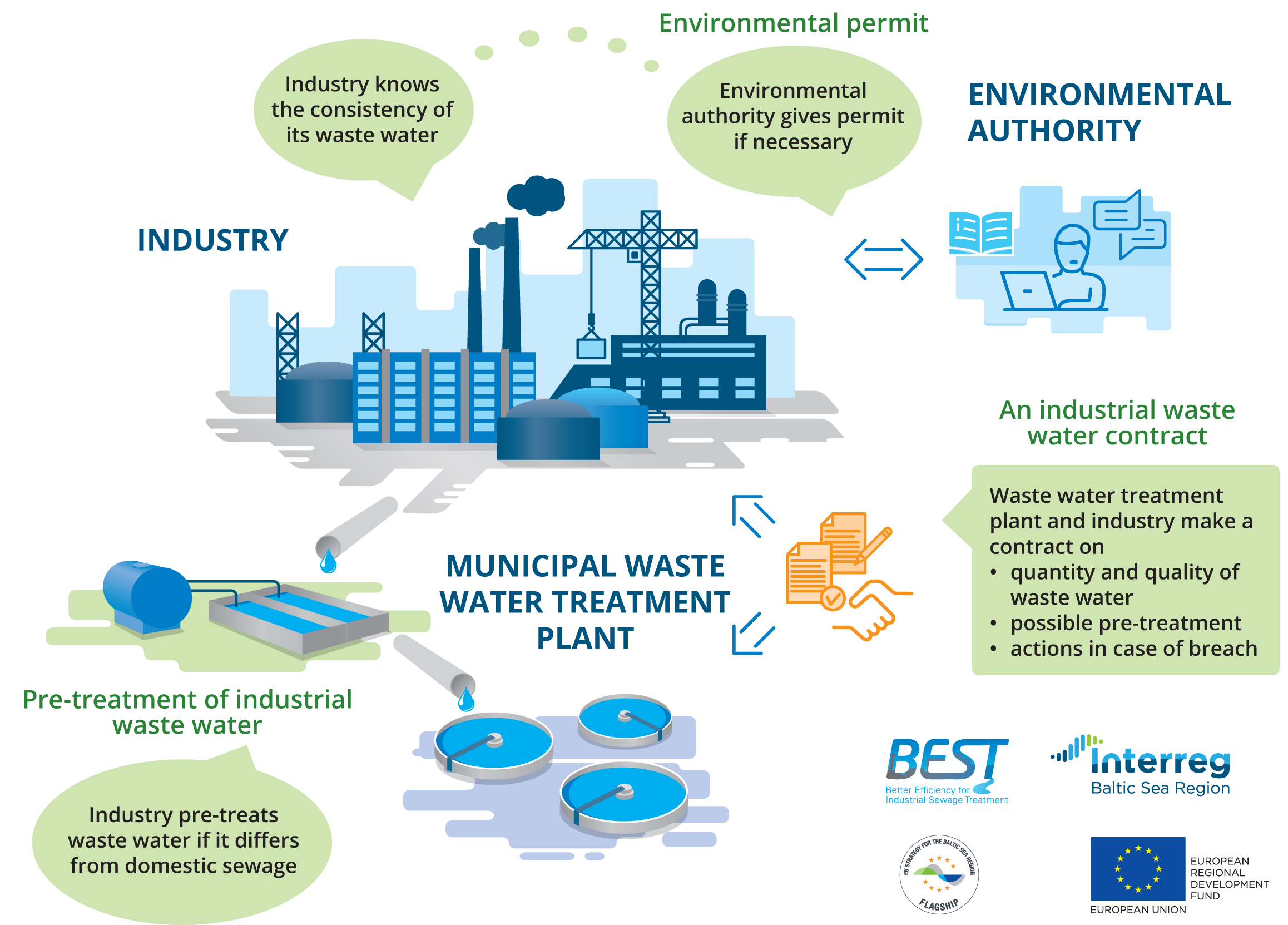In summer 2018 the biological nitrogen treatment suddenly failed in a large wastewater treatment plant (WWTP) in Finland, and for almost two weeks excess amount of nitrogen was released to the Baltic Sea. The reason for the failure was a toxic chemical agent discharged to the sewer from an industrial company. Municipal wastewater treatment plants are primarily designed to treat domestic sewage, and therefore, industrial sewage can cause severe problems at the WWTPs unless properly pretreated by the industrial company. Even non-toxic and mainly harmless sewage from food industry, e.g. dairies, can be challenging for the wastewater treatment plant if it contains high amounts of organic matter, and especially, if it is discharged to the plant unexpectedly and in large amounts.
Better control of industrial sewage is in focus in EU Interreg Baltic Sea Region funded project BEST – Better Efficiency for Industrial Sewage Treatment with partners form Finland, Estonia, Latvia, Poland and Russia. City of Helsinki leads the project, which aims to find solutions for successful co-treatment of domestic and industrial wastewater at the municipal sewage treatment plants. Even rather simple and cheap solutions may in some cases significantly improve the situation at the WWTP and ensure efficient treatment. Regular communication and cooperation between the WWTP and its industrial clients prevent unexpected situations and help the WWTP to prepare for accidental sewage discharges from industries. Training of staff at both the WWTP and in the industry enables mutual understanding and adequate actions in differing situations as well as helps communication. In project BEST, a goal it to prepare training materials and models to be used by industries, WWTPs and also by environmental authorities monitoring the industrial discharges.
Industrial wastewaters are still a challenge in the Baltic Sea Region and the strategies and practices to cope with the problems industrial wastewaters cause at the municipal WWTPs vary in different countries. To answer this challenge, the BEST project is compiling Baltic Sea Region wide guidelines for responsible and efficient industrial wastewater management. These guidelines are targeted at all the players in the industrial wastewater management field. Around the Baltic Sea, WWT experts, authorities and industrial unions shared their experience and knowledge in the workshops and interviews, and this knowledge was compiled to into the guidelines. The new guidelines include national annexes for Baltic Sea Region countries in order to take in account national specialties in legislation and practices. The guidelines cover legislation, permits and contracts, monitoring, pre-treatment methods and cooperation models. Another BEST project task, assessment of the current situation on the management and treatment of key industrial wastewaters around the Baltic Sea, helped to pinpoint national practices and development needs in the industrial wastewater management for the new guidelines.
In the BEST project, the aim is not only to assess the situation and give guidelines, but also to make concrete investments in industrial companies and WWTPs. With the project funding, the project has helped two dairy companies in Estonia and Latvia to improve their pre-treatment processes. More efficient pre-treatment of dairy sewage also assists local WWTPs to reach better degree of treatment.
Moreover, in Poland BEST project invests in an entirely new treatment line for industrial sewage at a small municipal WWTP. Here, a modern method for phosphorus filtration with calcium silicate also enables phosphorus recovery. Another Polish WWTP invests in a pilot system to test prospects of biogas production by co-fermentation of wastewater sludge and biodegradable industrial waste. In Estonia, a WWTP purchased a portable monitoring equipment in order to track the industries responsible for occasional high discharges of harmful substances to the WWTP. Such devices would be very helpful, if in wider use in WWTPs around the Baltic Sea.
Miitta Rantakari, City of Helsinki, Communication Manager of Project BEST


